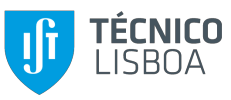Vol. 10, No. 3, Mar-Apr 2015
In this issue:
1. Under the spotlight
2. People
3. Publications
4. Conferences, Meetings & Seminars
5. Projects
1. Under the spotlight
Bringing your attention to a matter in this issue of the Newsletter
Body Area Networks (BANs) will be strategic actors of the next generation of wireless systems beyond the fourth generation, supporting the world of everything for connected devices and objects. Potential scenarios include monitoring of biological signals in healthcare care units, as well as elderly people monitoring in home environments. The data collected by the wearable sensors can be used either in the network itself or forwarded to any appropriated external one (e.g., emergency services). A novel model is proposed using a smart and cooperative configuration of the wearable nodes, i.e., using clusters of nodes and combining multiple independent paths to behave like multi-antennas systems (i.e., Virtual MIMO). The aim is to enhance the reliability of communications and to overcome the effects of deep fading, which can be critical for some applications (e.g., life support decisions). Different metrics are proposed for the selection of the best wearable nodes, namely, the relative MIMO capacity gain (ratio between the MIMO capacity and the maximum throughput from the SISO branches), and the configuration score (relative capacity of a selected 2×2 configuration in relation to the maximum theoretical capacity of a particular BAN).
This approach is supported by a channel model that considers the received signal composed of an on-body component (obtained from full wave simulations) and of several multipath components present in the environment (obtained from a geometrically based statistical channel model adapted to BANs). The model includes realistic body dynamics (taken from motion capture analysis). The case studies of the data sensors on the head (front and back), on the ears or on the arms, while the sink is on the front of the body (e.g., belt) are analysed. In case of the head-belt connection the signals are balanced, but, being highly correlated due to the short distances and similar propagation conditions and relative MIMO gains are small (1.57). If the data sensors are moved to the ears, higher relative MIMO gains are achieved (1.81). The trend of the average capacity over time when the sensors are on the arms exhibits higher fluctuations when compared to the placements on the head/ears, corresponding to the arms swinging, leading to an average gain of 1.73. Nevertheless, the performance of the selected virtual MIMO case studies (with relative MIMO capacity gains ranging in [1.57, 1.81]) is always enhanced when compared to the best SISO scenario, even for line-of-sight branches.
The selection of the optimum placements should be done according to the specific system under study. The best performance for the analysed case studies corresponds to the sensors on the ears, reaching a configuration score of 0.76.
Carla Oliveira
2. People
Information about incoming and outgoing people, besides other related news.
The whole GROW team, as well as many other colleagues from IST and ISCTE, were involved in the organisation of EuCAP’2015 (The 9th European Conference on Antennas and Propagation — www.eucap2015.org), held in Lisbon, on April 12th-17th. The conference reached almost 1 300 participants, from 55 countries around the whole world, presenting more than 1 000 papers. We dare to say that the conference was a success, since most of the feedback we got from participants was very positive. It was pleasure to host all our colleagues.
3. Publications
Information about publications, at both national and international levels, concerning papers submitted, accepted, or published in the period.
Sławomir J. Ambroziak, Luis M. Correia, Ryszard J. Katulski and Michał Maćkowiak, “Impact of radio wave polarisation on off-body communications in indoor environments”, Proc. of EuCAP’2015 – 9th European Conference on Antennas and Propagation, Lisbon, Portugal, Apr. 2015.
Carla Oliveira and Luis M. Correia, “MIMO Capacity for On-Body Communications in Scattered Environments”, accepted for publication at Wireless Personal Communications.
Luisa Caeiro, Filipe D. Cardoso and Luis M. Correia, “Addressing Multiple Virtual Resources in the Same Geographical Area”, accepted to EuCNC2015—European Conference on Networks and Communications, Paris, France, June 2015.
Sina Khatibi and Luis M. Correia, “Modelling Virtual Radio Resource Management with Traffic Offloading Support”, accepted to EuCNC’2015 – 24th European Conference on Networks and Communications, Paris, France, June 2015.
Carla Oliveira and Luis M. Correia, “Capacity Analysis for On-body Communications in an Indoor Environment”, accepted to PIERS’2015 – 36th Progress in Electromagnetics Research Symposium, Prague, Czech Republic, July 2015.
Luisa Caeiro, Sina Khatibi, Lúcio Ferreira and Luis M. Correia, “A Perspective on Virtual Radio Access Networks”, accepted to COST IC1004 Workshop on Evolution of Radio Access Network Technologies towards 5G, Valencia, Spain, May 2015.
4. Conferences, Meetings & Seminars
List of Conferences, Meetings, Seminars, and other events held and attended during this period, and to be held the following month.
2015-03-10/11
Luis M. Correia, Luísa Caeiro, Lúcio Ferreira
MCN Meeting, Zurich, Switzerland
2015-03-24
Luis M. Correia
EuCNC Steering Committee meeting, Brussels, Belgium
2015-03-25
Luis M. Correia
NETFUTURES, Brussels, Belgium
2015-04-10
Daniel Sebastião, Mónica Branco
FAQtos Seminar, Escola Secundária Mouzinho de Albuquerque, Portalegre, Portugal
2015-04-13/17
Carla Oliveira, Daniel Sebastião, Lucio Ferreira, Mónica Branco, Kenan Turbic, Vera Almeida, Ema Catarré, Luis M. Correia
EuCAP’2015, Lisbon, Portugal
2015-04-20
Daniel Sebastião
FAQtos Seminar, Escola Secundária Rodrigues de Freitas, Porto, Portugal
2015-04-20/22
Carla Oliveira, Filipe Cardoso, Luís M. Correia
LEXNET Meeting, Santander, Spain
2015-04-21/23
Luís M. Correia, “Virtualisation of Radio Resources”
Lúcio Ferreira, Behnam Rouzbehani, Mojgan Barahman
8th IC1004 Training School “From HetNets to cloud radio access networks”, Luxembourg, Luxembourg
2015-04-24
Daniel Sebastião, Mónica Branco
FAQtos Seminar, ES/3 de Porto de Mós, Porto de Mós, Portugal
2015-05-05
Luís M. Correia, “A Perspective on Virtual Radio Access Networks”
COST IC1004 Workshop on Evolution of Radio Access Network Technologies towards 5G, Valencia, Spain
2015-05-06/07
Luís M. Correia
COST IC1004 meeting, Valencia, Spain
2015-05-14
Andrea Marotta, “Optimisation of Radio Access Network Cloud Architectures Deployment in LTE-Advanced”
Cláudia Castro, “Optimisation of Ground Stations Location in Aeronautical Multilateration Systems”
GROWing meeting
2015-05-27
Luís M. Correia
23rd Seminar on Mobile Communications Systems, Lisbon, Portugal
5. Projects
News about the several projects in which GROW is involved.
COST IC1004 – http://www.ic1004.org
The contribution to the COST book has been updated by Lúcio Ferreira and Sina Khatibi. Another contribution has been updated by Carla Oliveira.
LEXNET – http://www.lexnet-project.eu
The definition of a cost function taking into account EMF as a KPI for network management/performance analysis was done in WP5, and now a paper is being prepared, together with the contribution to the next deliverable of WP5. In WP7, the document with a general description of LEXNET and its main results that will be made available at the website was translated to Portuguese.
MCN – http://www.mobile-cloud-networking.eu
The work on the implementation of VRRM in OAI LTE base station emulator, as well as integrating traffic scenarios, performed by Luisa Caeiro and Sina Khatibi is progressing.
NEWCOM# – http://www.newcom-project.eu
Sina Khatibi and Luisa Caeiro with collaboration of Eurecom are working on the modification of the MAC scheduler of OAI to support grouping and virtualisation.
FAQtos – http://faqtos.pt
The 2015 edition of Prémio FAQtos is ongoing and the countdown to the delivery of the final projects has started. In the meanwhile, some of the groups are having training in EMF measurement equipment. Continuous monitoring of EMFs continues to be done in Valongo, with 5 monitoring stations, with 1 further station installed in Felgueiras. Some seminars were held on various schools during March and April.




